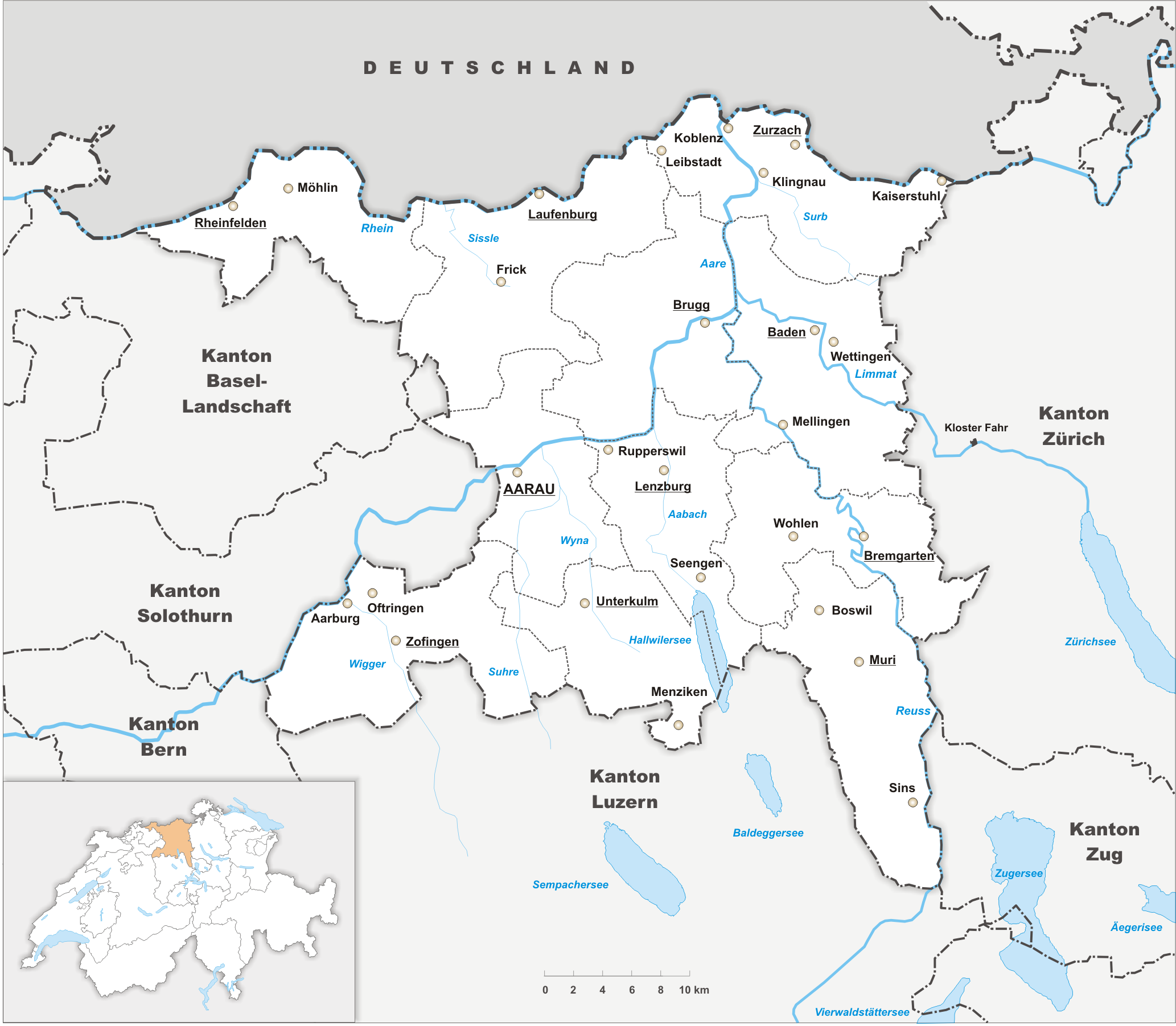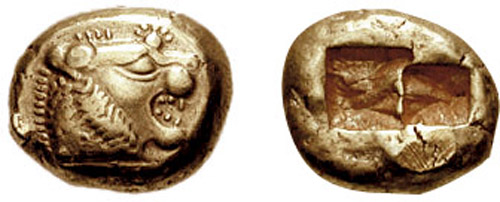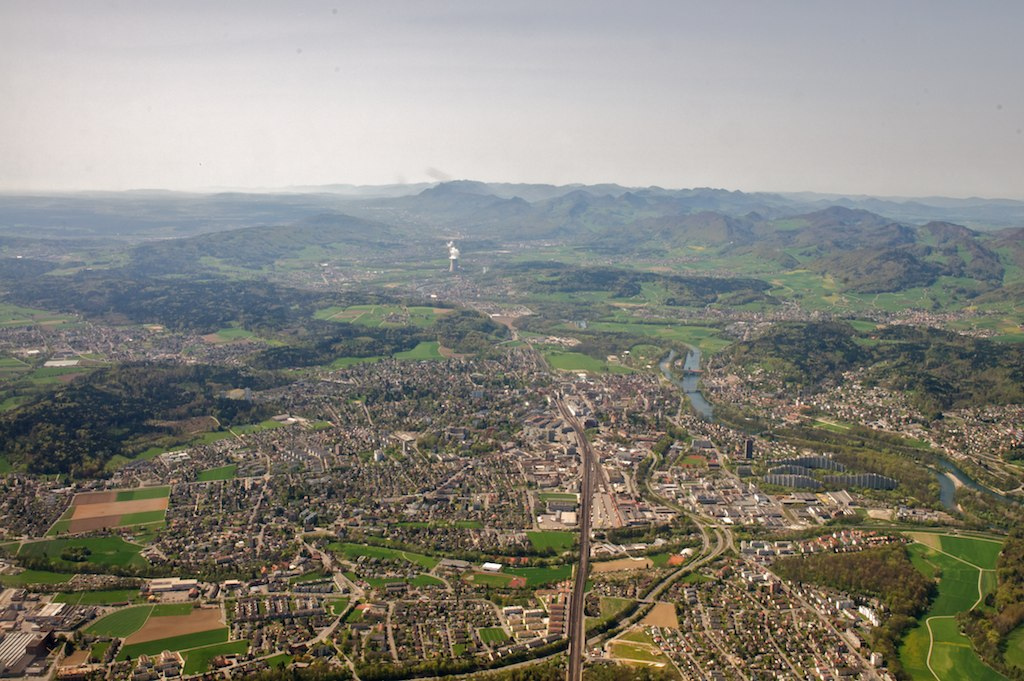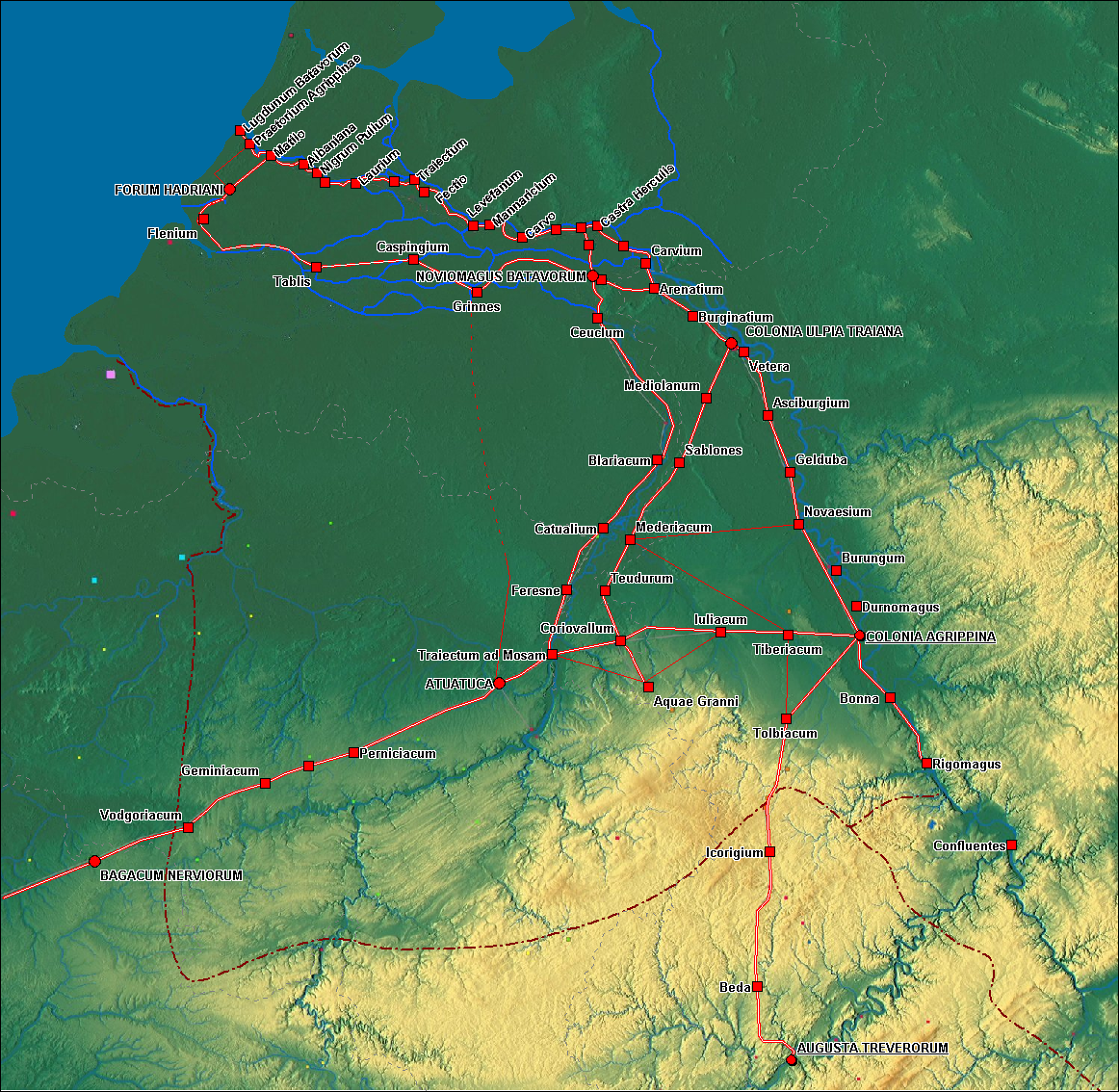|
Canton Of Aargau
Aargau ( ; ), more formally the Canton of Aargau (; ; ; ), is one of the 26 cantons forming the Swiss Confederation. It is composed of eleven districts and its capital is Aarau. Aargau is one of the most northerly cantons of Switzerland, by the lower course of the Aare River, which is why it is called ''Aar- gau'' ("Aare province"). It is one of the most densely populated regions of Switzerland. History Early history The area of Aargau and the surrounding areas were controlled by the Helvetians, a tribe of Celts, as far back as 200 BC. It was eventually occupied by the Romans and then by the 6th century, the Franks. The Romans built a major settlement called Vindonissa, near the present location of Brugg. Medieval Aargau The reconstructed Old High German name of Aargau is ''Argowe'', first unambiguously attested (in the spelling ''Argue'') in 795. The term described a territory only loosely equivalent to that of the modern canton, including the region between Aare ... [...More Info...] [...Related Items...] OR: [Wikipedia] [Google] [Baidu] |
Cantons Of Switzerland
The 26 cantons of Switzerland are the Federated state, member states of the Switzerland, Swiss Confederation. The nucleus of the Swiss Confederacy in the form of the first three confederate allies used to be referred to as the . Two important periods in the development of the Old Swiss Confederacy are summarized by the terms ('Eight Cantons'; from 1353 to 1481) and ('Thirteen Cantons', from 1513 to 1798).rendered "the 'confederacy of eight'" and "the 'Thirteen-Canton Confederation'", respectively, in: Each canton of the Old Swiss Confederacy, formerly also ('lieu/locality', from before 1450), or ('estate', from ), was a fully sovereignty, sovereign state with its own border controls, army, and currency from at least the Treaty of Westphalia (1648) until the establishment of the Swiss federal state in 1848, with a brief period of centralised government during the Helvetic Republic (1798–1803). The term has been widely used since the 19th century. "" The number of canton ... [...More Info...] [...Related Items...] OR: [Wikipedia] [Google] [Baidu] |
Brandmark
A logo (abbreviation of logotype; ) is a graphic mark, emblem, or symbol used to aid and promote public identification and recognition. It may be of an abstract or figurative design or include the text of the name that it represents, as in a wordmark. In the days of hot metal typesetting, a logotype was one word cast as a single piece of type (e.g. "The" in ATF Garamond), as opposed to a ligature, which is two or more letters joined, but not forming a word. By extension, the term was also used for a uniquely set and arranged typeface or colophon. At the level of mass communication and in common usage, a company's logo is today often synonymous with its trademark or brand.Wheeler, Alina. ''Designing Brand Identity'' © 2006 John Wiley & Sons, Inc. (page 4) Etymology Douglas Harper's ''Online Etymology Dictionary'' states that the first surviving written record of the term 'logo' dates back to 1937, and that the term was "probably a shortening of logogram". History Numerous ... [...More Info...] [...Related Items...] OR: [Wikipedia] [Google] [Baidu] |
Napf
The Napf is a mountain on the border between the Swiss cantons of Canton of Bern, Bern and Canton of Lucerne, Lucerne. With an altitude of , it is the summit of the Napfgebiet (Napf region), the hilly region lying between Bern and Lucerne. It is counted geologically as part of the Swiss plateau, although it is sometimes considered part of the Emmental Alps.The eastern half of the massif is part of the Alpine Convention perimeter. The region is bounded by the Emmental to the south-west and the Entlebuch to the east. The region is traversed by the Brünig-Napf-Reuss line. The peak is surrounded by steep hills that are a patchwork of evergreen forests and small mountain farms. Nearby towns include Romoos, Doppleschwand, Michlischwand, Luthern, and Menzberg. Climate See also *List of mountains of Switzerland *List of most isolated mountains of Switzerland References External links Napf on HikrNapf Hotel {{Authority control Mountains of Switzerland Mountains of the canton ... [...More Info...] [...Related Items...] OR: [Wikipedia] [Google] [Baidu] |
Pilatus (mountain)
Pilatus, also often referred to as Mount Pilatus, is a mountain massif overlooking Lucerne in Central Switzerland. It is composed of several peaks, of which the highest () is named ''Tomlishorn''. Geography and transport The whole mountain range stretches at least from the Lopper just opposite from Stansstad to the east as far as at least to the Mittaggüpfi () and the ''Risetestock'' () to the west on the border between LU and OW. The highest peak, Tomlishorn (), and the other peaks, such as ''Widderfeld'' () even further west than the Tomlishorn on the border between LU and OW, ''Matthorn'' () to the south, the ''Klimsenhorn'' () to the north (NW), and ''Rosegg'' () and ''Windegg'' () to the east, both on the border of NW and OW, should only be approached with appropriate Alpine hiking equipment. Jurisdiction over the massif is divided between the cantons of Obwalden (OW), Nidwalden (NW), and Lucerne (LU). The main peaks are right on the border between Obwalden and ... [...More Info...] [...Related Items...] OR: [Wikipedia] [Google] [Baidu] |
Reuss (river)
The Reuss (; ) is a river in Switzerland. With a length of and a drainage basin of , it is the fourth largest river in Switzerland (after the Rhine, Aare and Rhône). The upper Reuss forms the main valley of the canton of Uri. The course of the lower Reuss runs from Lake Lucerne to the confluence with the Aare at Brugg and Windisch. The Reuss is one of the four major rivers taking their source in the Gotthard region, along with the Rhine, Ticino and Rhône. Geography Course The Gotthardreuss rises in the Gotthard massif, emerging from Lago di Lucendro (reservoir built in 1947; elevation 2,131 m) in the canton of Ticino and passing into the canton of Uri below the ''Brigghubel'' (1,898 m). The Furkareuss rises east of Furka Pass (2,429 m), early joined by the ''Blaubergbach'' (sourced by two mountain lakes on 2,649 m) and several other creeks sourced by still existing glaciers, such as ''Sidelengletscher'' (3,170 m), ''Tiefengletsc ... [...More Info...] [...Related Items...] OR: [Wikipedia] [Google] [Baidu] |
Aarau Altstadt
Aarau (, ) is a town, a municipality, and the capital of the northern Swiss canton of Aargau. The town is also the capital of the district of Aarau. It is German-speaking and predominantly Protestant. Aarau is situated on the Swiss plateau, in the valley of the Aare, on the river's right bank, and at the southern foot of the Jura Mountains, and is west of Zurich, south of Basel and northeast of Bern. The municipality borders directly on the canton of Solothurn to the west. It is the largest town in Aargau. At the beginning of 2010 Rohr became a district of Aarau. The official language of Aarau is (the Swiss variety of Standard) German, but the main spoken language is the local variant of the Alemannic Swiss German dialect. Geography and geology The old city of Aarau is situated on a rocky outcrop at a narrowing of the Aare river valley, at the southern foot of the Jura mountains. Newer districts of the city lie to the south and east of the outcrop, as well as higher up the ... [...More Info...] [...Related Items...] OR: [Wikipedia] [Google] [Baidu] |
Brugg
Brugg (sometimes written as Brugg AG in order to distinguish it from other ''Brugg''s) is a Switzerland, Swiss Municipalities of Switzerland, municipality and a List of towns in Switzerland, town in the canton of Aargau and is the seat of the Brugg (district), district of the same name. The town is located at the confluence of the Aare, Reuss (river), Reuss, and Limmat, with the Aare flowing through its medieval part. It is located approximately from the cantonal capital of Aarau; from Zürich; and about from Basel. Brugg is the Swiss German term for bridge (). This is an allusion to the purpose of the medieval town's establishment under the Habsburgs, as the town is located at the narrowest point on the Aare in the Swiss plateau, Swiss midlands. The Habsburgs’ oldest known residence is located in the neighborhood of :de:Altenburg bei Brugg, Altenburg, which had previously been an independent community. Prior to their relocation to Austria, Brugg was the center of the Habsbur ... [...More Info...] [...Related Items...] OR: [Wikipedia] [Google] [Baidu] |
Vindonissa
Vindonissa (from a Gaulish toponym in *''windo-'' "white") was a Roman legion camp, vicus and later a bishop's seat at modern Windisch, Switzerland. The remains of the camp are listed as a heritage site of national significance. The city of Brugg hosts a small Roman museum, displaying finds from the legion camp. History Excavations along the western edge of the Roman camp have discovered a few funeral pyre graves dating to the late Bronze Age ( 1000–800 BC). The first settlement of Vindonissa was a 1st-century BC Helvetii fortified village on the peninsula between the Aare and Reuss rivers. The settlement was protected by an approximately -long wood and earth wall, with an up to -deep trench, which stretched across the narrow neck of the peninsula. The settlement came under Roman control either after the 58 BC conquest of the Helvetii by Julius Caesar or the 15 BC conquest of the Alps. A small guard-post was established on the site around 15 BC. The Roman se ... [...More Info...] [...Related Items...] OR: [Wikipedia] [Google] [Baidu] |
Franks
file:Frankish arms.JPG, Aristocratic Frankish burial items from the Merovingian dynasty The Franks ( or ; ; ) were originally a group of Germanic peoples who lived near the Rhine river, Rhine-river military border of Germania Inferior, which was the most northerly province of the Roman Empire in continental Europe. These Frankish tribes lived for centuries under varying degrees of Roman hegemony and influence, but after the collapse of Roman institutions in western Europe they took control of a large empire including areas which had been ruled by Rome, and what it meant to be a Frank began to evolve. Once they were deeply established in Gaul, the Franks became a multilingual, Catholic Christian people, who subsequently came to rule over several other post-Roman kingdoms both inside and outside the old empire. In a broader sense much of the population of western Europe could eventually described as Franks in some contexts. The term "Frank" itself first appeared in the third cent ... [...More Info...] [...Related Items...] OR: [Wikipedia] [Google] [Baidu] |
Roman Empire
The Roman Empire ruled the Mediterranean and much of Europe, Western Asia and North Africa. The Roman people, Romans conquered most of this during the Roman Republic, Republic, and it was ruled by emperors following Octavian's assumption of effective sole rule in 27 BC. The Western Roman Empire, western empire collapsed in 476 AD, but the Byzantine Empire, eastern empire lasted until the fall of Constantinople in 1453. By 100 BC, the city of Rome had expanded its rule from the Italian peninsula to most of the Mediterranean Sea, Mediterranean and beyond. However, it was severely destabilised by List of Roman civil wars and revolts, civil wars and political conflicts, which culminated in the Wars of Augustus, victory of Octavian over Mark Antony and Cleopatra at the Battle of Actium in 31 BC, and the subsequent conquest of the Ptolemaic Kingdom in Egypt. In 27 BC, the Roman Senate granted Octavian overarching military power () and the new title of ''Augustus (title), Augustus'' ... [...More Info...] [...Related Items...] OR: [Wikipedia] [Google] [Baidu] |
Celts
The Celts ( , see Names of the Celts#Pronunciation, pronunciation for different usages) or Celtic peoples ( ) were a collection of Indo-European languages, Indo-European peoples. "The Celts, an ancient Indo-European people, reached the apogee of their influence and territorial expansion during the 4th century BC, extending across the length of Europe from Britain to Asia Minor."; . "[T]he Celts, were Indo-Europeans, a fact that explains a certain compatibility between Celtic, Roman, and Germanic mythology."; . "The Celts and Germans were two Indo-European groups whose civilizations had some common characteristics."; . "Celts and Germans were of course derived from the same Indo-European stock."; . "Celt, also spelled Kelt, Latin Celta, plural Celtae, a member of an early Indo-European people who from the 2nd millennium bce to the 1st century bce spread over much of Europe." in Europe and Anatolia, identified by their use of Celtic languages and other cultural similarities.. "C ... [...More Info...] [...Related Items...] OR: [Wikipedia] [Google] [Baidu] |
Helvetians
The Helvetii (, , Gaulish: *''Heluētī''), anglicized as Helvetians, were a Celtic tribe or tribal confederation occupying most of the Swiss plateau at the time of their contact with the Roman Republic in the 1st century BC. According to Julius Caesar, the Helvetians were divided into four subgroups or '' pagi.'' Of these, Caesar names only the Verbigeni and the Tigurini, while Posidonius mentions the Tigurini and the Tougeni (). They feature prominently in the '' Commentaries on the Gallic War,'' with their failed migration attempt to southwestern Gaul (58 BC) serving as a catalyst for Caesar's conquest of Gaul. The Helvetians were subjugated after 52 BC, and under Augustus, Celtic oppida, such as Vindonissa or Basilea, were re-purposed as garrisons. In AD 68, a Helvetian uprising was crushed by Aulus Caecina Alienus. The Swiss plateau was at first incorporated into the Roman province of Gallia Belgica (22 BC), later into Germania Superior (AD 83). The Helvetians, like ... [...More Info...] [...Related Items...] OR: [Wikipedia] [Google] [Baidu] |









